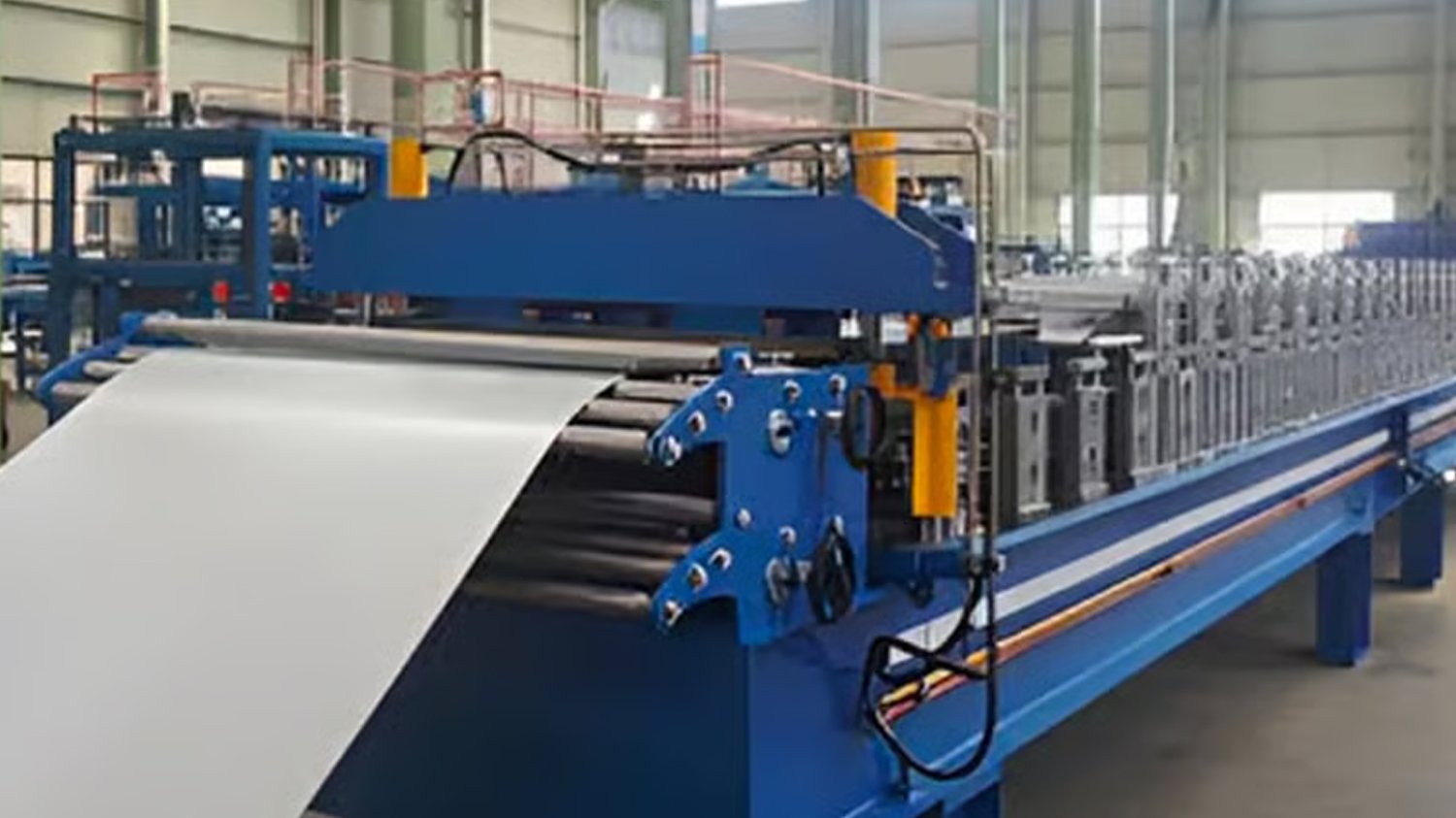A double layer roll forming machine is an advanced manufacturing device designed to shape metal sheets into precise profiles by passing them through consecutive rollers in two parallel layers. Unlike single-layer machines, this type features dual forming tracks, which enable simultaneous or sequential production of two metal strips, enhancing throughput and efficiency. This technology is crucial for sectors requiring consistent, high-volume metal components such as construction, automotive, and appliance manufacturing.
Structural Design and Mechanism
The defining characteristic of a double layer roll forming machine is its complex structural design, which integrates two separate roll forming lines stacked or positioned side by side. This setup allows for the independent control of roller pressure and timing for each layer, facilitating the processing of different profiles simultaneously. The mechanism uses synchronized motors and precision gearboxes to maintain alignment and prevent distortion, ensuring the dimensional accuracy of products.
Material Compatibility and Thickness Range
Double layer roll forming machines are versatile and compatible with various metals including cold-rolled steel, galvanized steel, aluminum, and sometimes copper. The typical thickness range accommodated is between 0.3 mm to 3.0 mm, although certain customized machines may handle thicker sheets. The ability to process diverse materials is essential for manufacturers aiming to meet customized product specifications and expanding market demands.
Production Efficiency and Speed Advantages
One of the most significant advantages of double layer roll forming machines is their enhanced production efficiency. By simultaneously forming two metal strips, these machines can effectively double output without requiring additional floor space or labor. Moreover, the continuous roll forming process minimizes downtime, while servo-controlled systems optimize speed, often reaching 15-30 meters per minute depending on the profile complexity and material.
Quality Control and Precision Engineering
Quality assurance in double layer roll forming machines is maintained through advanced features such as automatic thickness measurement, lateral guiding devices, and real-time monitoring systems. Precision engineering in the rollers, combined with computerized control, ensures uniform thickness, smooth surface finish, and consistent profile dimensions. Such stringent quality control is vital for applications demanding adherence to ISO standards or customer-specific requirements.
Customization Capabilities for Diverse Applications
These machines are highly customizable, capable of being equipped with various cutting, punching, notching, and embossing attachments. Manufacturers can tailor the machine to produce roofing sheets, wall panels, door frames, or structural components according to project demands. The adaptability of the double layer roll forming machine makes it an indispensable asset in facilities catering to multiple product lines.
Energy Consumption and Environmental Impact
Despite its dual-layer configuration, this type of roll forming machine is engineered for energy efficiency. Modern models incorporate servo motors and regenerative braking systems to reduce power consumption. Additionally, forming metal sheets without generating significant scrap material promotes sustainability. The machine's contribution to lowering manufacturing waste and energy use aligns with global trends towards greener industrial processes.
Maintenance and Operational Simplicity
Though sophisticated, double layer roll forming machines are designed for straightforward maintenance and operation. Modular components and easy-access panels simplify routine servicing such as lubrication, roller replacement, and gear adjustments. User-friendly control interfaces enable operators to configure settings quickly, which reduces training time and minimizes operational errors, resulting in lower overall maintenance costs.
Integration with Automation Systems
To meet Industry 4.0 standards, many double layer roll forming machines can be integrated with automated material handling systems, including servo feeders, stackers, and inspection units. This integration enables continuous, unattended operation, reducing labor requirements and increasing overall line productivity. Data connectivity also aids in predictive maintenance and real-time production analytics, empowering manufacturers with actionable insights.
Future Trends and Technological Innovations
The evolution of double layer roll forming machines continues as manufacturers pursue higher productivity and product complexity. Emerging innovations include the use of AI-driven process optimization, advanced sensor arrays for defect detection, and eco-friendly lubricants. Additionally, lightweight frame materials and compact designs are becoming prevalent, allowing for greater installation flexibility and improved machine longevity. These advancements promise to maintain the machine’s pivotal role in modern metal forming industries.
Quote Inquiry
contact us

